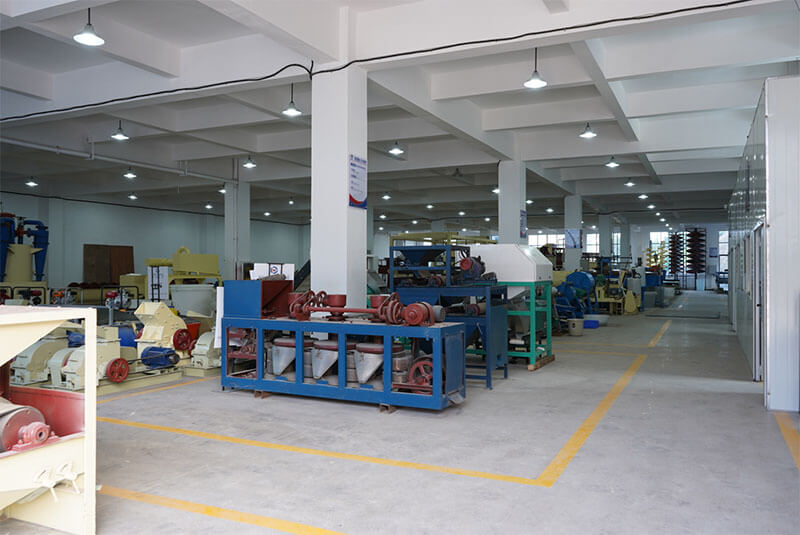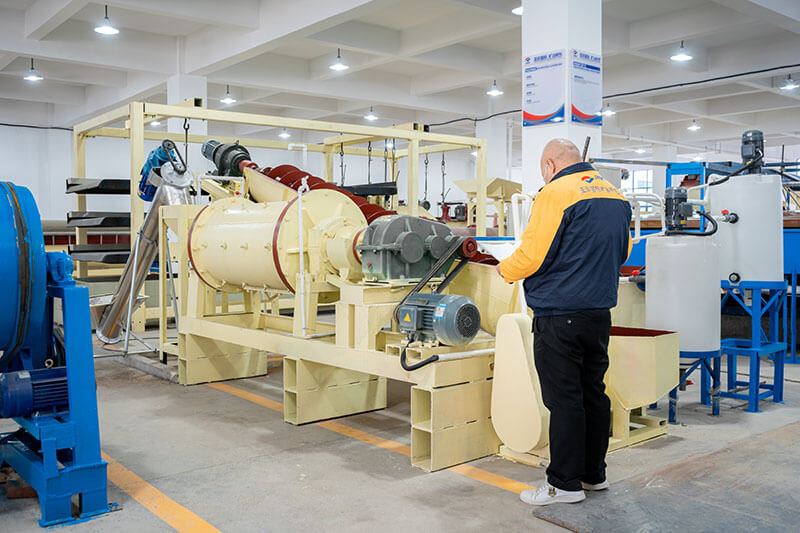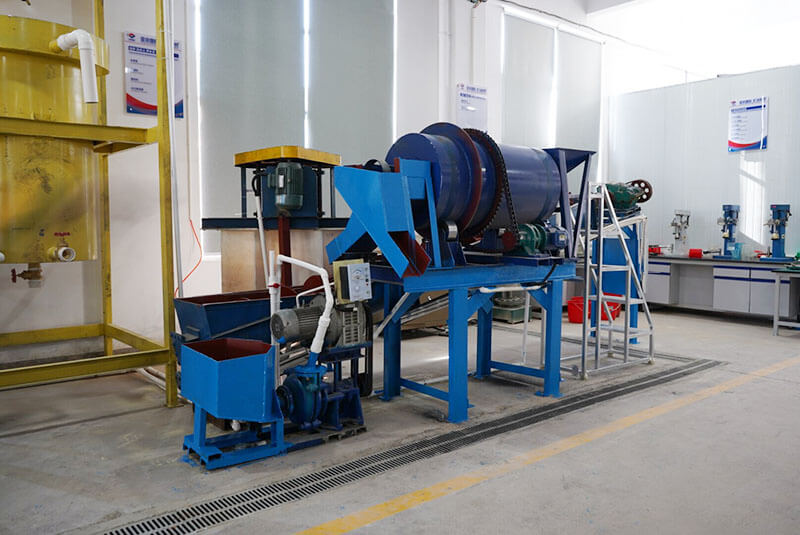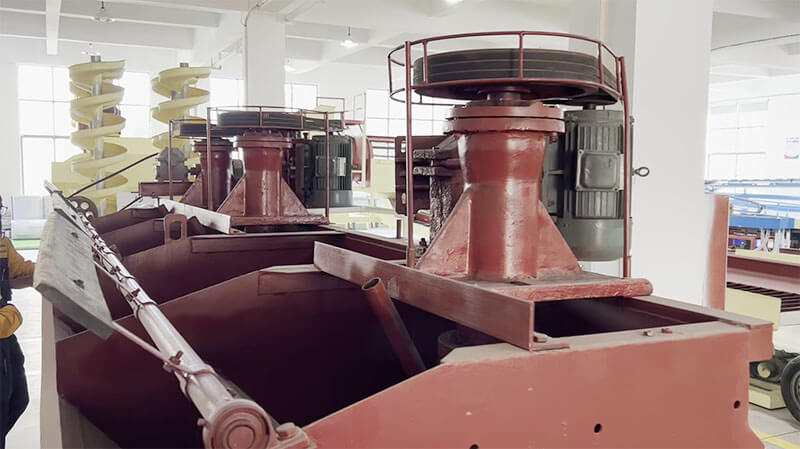Lead and zinc ores usually need beneficiation to enrich the concentrate before smelting lead and zinc metal products. The ore processing and beneficiation test is an important component of geological exploration work and one of the important criteria for evaluating whether a deposit meet requirement for commercial mineral ore research and development. Therefore, It is necessary to conduct ore beneficiation tests during the geological exploration process and there will need some lab equipment at the same time, So which lab equipment is for this lead-zinc ore experimental test?
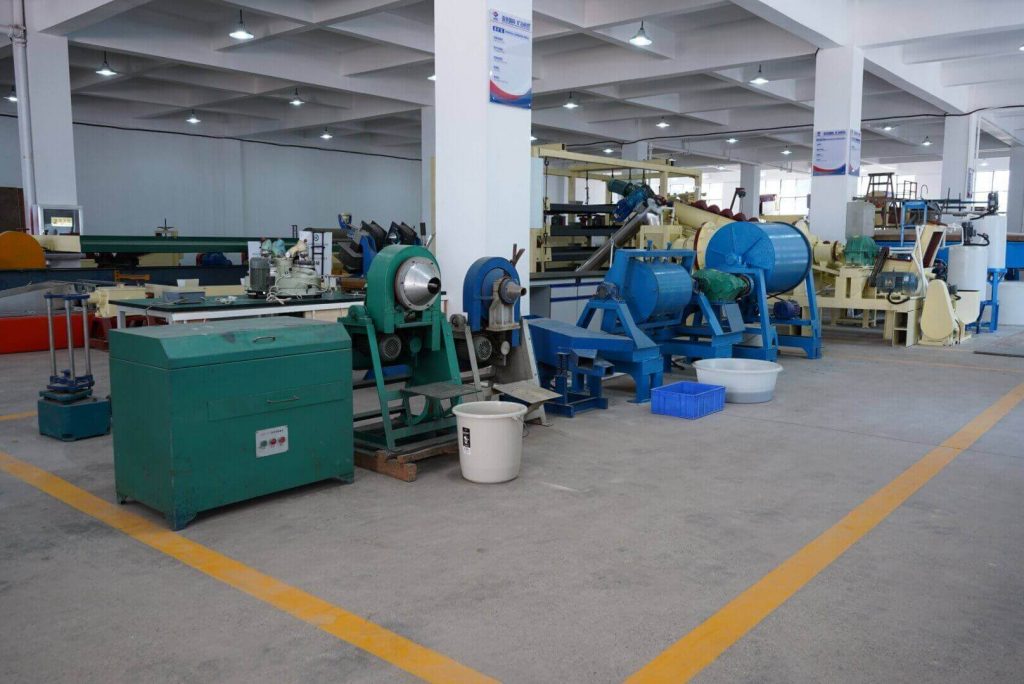
Lead Zinc Ore Process Equipment
1. Laboratory Jaw Crusher-Lead Zinc Ore Process Equipment
The laboratory jaw crusher is for intermediate and fine crushing of medium-hardness raw materials. The crushing method is a curved extrusion type, which relies on two wear-resistant jaw plates to crush the material. The crushed material is brittle, and the shape of the crushed material is mostly flaky. The compressive strength of the crushed material should not exceed 80MPa. If the moisture content of the material exceeds 6%, it will cause a blockage in the feeding process. This equipment has wide applications in the industries such as metallurgy, mining, and coking. The inlet and outlet of the small machine are all sealed, mainly used in the laboratory. It is suitable for crushing various ores, such as rock gold, marble, lithium ore, chromium ore, copper lead-zinc ore, etc.
- Operation: Prepare some rock lead-zinc ore before the experiment starts. Place 100mm of raw ore into the lab jaw crusher, and the fixed and movable jaw of the crusher will work and crush the material to around 10-40mm. The crushed material will discharge from the bottom discharge port of the jaw crusher.
- Advantage: It has the advantage of reasonable structure, uniform discharge particle size, convenient maintenance, good dust removal effect, and balanced operation.
2. Laboratory Double Roller Crusher-Lead Zinc Ore Process Equipment
It is suitable for the second or third crushing of various ores, such as rock gold, lithium ore, chromium ore, copper lead-zinc ore, etc.
- The principle of lab roller crusher: The machine crushing system is equipped with a pair of opposite rotating pressure rollers. During operation, the material is quantitatively fed from the hopper and tangentially enters the middle of the roller. After the material crushing, the material enters the bottom discharge hopper of the machine, completing the crushing process. We can control the particle size by adjusting the gap between the rollers, making it easy and convenient. The roller is made of carbon-bonded steel and has undergone heat treatment, with moderate hardness.
- Operation: Pour the material of 10-40mm into the lab roller crusher, and the roller will rotate to crush the material to a specific fine particle size, such as 0-10 mm, or 0-5mm.
- Performance characteristics of roller crusher:
- Its crushing method is roller compression type.
- The material should be brittle, and the shape of the crushed material is mostly regular flakes. The compressive strength of the crushed material should not exceed 60MPa.
- Level 3 hardness. Particle bonding occurs when the moisture content of the material exceeds 6%.
3. Laboratory Vibrating Screen-Lead Zinc Ore Process Equipment
There are single and double-layer dual-purpose vibrating screens, suitable for scientific research and testing units and factory laboratories in metallurgy, geology, natural chemistry, construction, cement, and other departments to screen materials. The screening machine can also divide materials into two or three particle sizes. If it only needs to screen two particle sizes, we can put a blank screen frame at the lower part of the upper screen body, and the supporting screen frame as a single layer. According to usage needs, it is possible to change four layers of screens to screen products of multiple levels, which is suitable for screening various types of ores with different particle size ranges.
- Operation: Pour the crushed material from the roller crusher into the vibrating screen with a screen mesh. When the equipment works and vibrates, the large materials will screen and stay on the screen mesh, while smaller materials will fall under the screen and send to the following equipment.
- Advantages
- The vibrating screen has a novel structure, advanced technology, large processing capacity, and high screening efficiency.
- The vibrating screen adopts a cylindrical eccentric shaft exciter and a deflection block to adjust the amplitude, making it easy to use and maintain.
- The vibrating screen adopts spring steel woven screen mesh or perforated screen plate, which has a long service life and does not block holes.
4. Laboratory Ball Mill-Lead Zinc Ore Process Equipment
It is a grinding equipment for rocks and minerals. The function of it is to grind small particle materials into powder form.
XMQ laboratory conical ball mill is suitable for wet grinding for various ores in the laboratory, like metal and non-metallic ore raw material test samples. It has a wide application for production in geological, mining, carbon smelting, coal, building materials, and power sectors that require laboratory crushing and processing. It is also for ultra-fine grinding and processing in coatings, ink, fuel, and food industry sectors. The conical ball mill is an essential piece of equipment for grinding materials after crushing. The conical ball mill is a widely used fine-grinding machine in various industries.
- Operation: Pour the material with the size of 0-25mm into a ball mill. Grind the material into powder of 0-1mm or 0-200mesh as needed through the grinding process of steel balls inside the ball mill.
- Characteristics of laboratory conical ball mill:
- Balanced and reasonable equipment configuration, high degree of automation in operation
- Fine grinding materials have low unit power consumption and high abrasive efficiency
- Automatic Feeding, discharging, and automatic control of the cylinder, without the need for manual operation, to avoid strain caused by manual operation.
- It is free to set machine running time, LCD screen menu display, and user-friendly design.
- Installation does not require a dedicated foundation, making it easy to move and maintain.
5. Lab Shaking Table-Lead Zinc Ore Process Equipment
The lab shaking table is for sorting fine mineral materials and is the most commonly used gravity beneficiation equipment in mineral processing operations. Mainly for recycling fine minerals with a size of 0-2mm and for separating rare and precious metal ores such as gold, silver, copper lead zinc, tantalum niobium tin, iron, manganese ore, as well as other non-ferrous and non-metallic mineral bodies with specific gravity differences.
- Operation: After the ball mill wet grinding, we got lead zinc slurry. Put 0-1mm lead zinc slurry into a lab shaker table. By utilizing mechanical shaking and the flushing effect of water flow, the mineral particles will separate according to their density. We will get multiple products simultaneously, and the zoning of minerals on the bed surface is obvious when checking.
- Advantages
- The selection process is stable and easy to control, with a wide range of allowable changes in ore concentration, high enrichment ratio, and high recovery rate.
- Small footprint, low water consumption, simple structure, and no need for power.
- It has the advantages of large processing capacity, easy installation, convenient operation, small investment, and quick return.
6. Laboratory Flotation Machine-Lead Zinc Ore Process Equipment
A laboratory flotation machine is a mineral-separating equipment that requires the addition of conventional reagents. The chemicals required to handle different materials vary, like gold, copper, lead zinc, fluorite, lithium ore, etc. Before the mining process, take mineral processing experiments to determine the reasonable values of various indicator parameters in the flotation process. The small flotation machine used in the laboratory is essential equipment in flotation experiments. Due to its simple structure, easy operation, and easy maintenance, this equipment has wide applications in geological, metallurgical, chemical, mineral processing, etc.
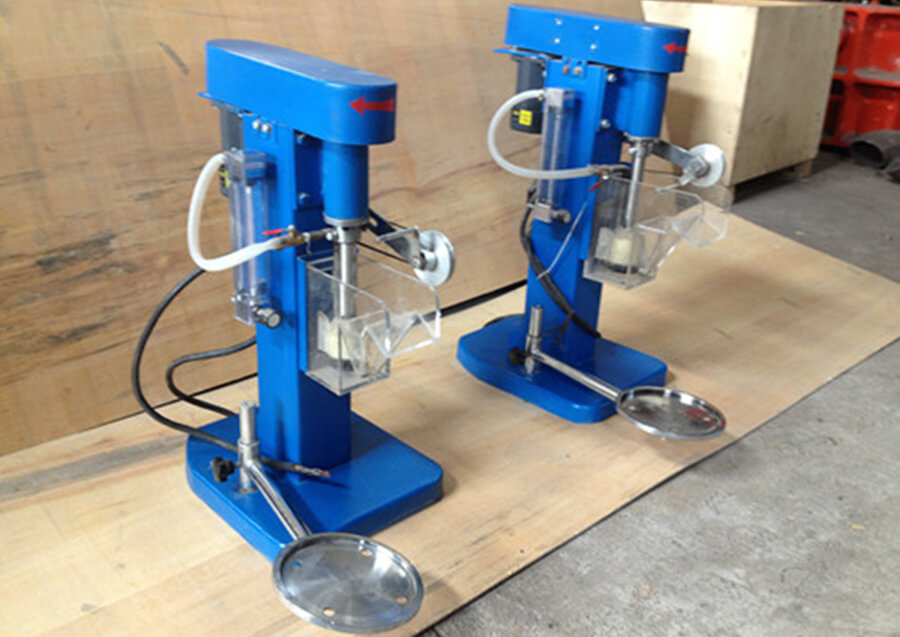
- Operation: Pour the slurry into the lab flotation cell tank and dilute it with water to the required concentration; Start the motor and add an appropriate amount of flotation agent according to the experimental requirements; When the foam generates in the tank, turn on the switch of the scraper part to start flotation; After reaching the specified flotation time, turn off the motor and stop the impeller and scraper from running.
- Advantages of XFD laboratory flotation machine
- The main shaft is made of stainless steel, which is acid and corrosion-resistant. The impeller cover plate is made of medium-hard acid-resistant rubber.
- The material of the flotation cell is an organic glass cell.
- The scraper belt is made of cowhide and is not broken easily.
- Fine workmanship, neat appearance, and even spray paint.
JXSC lab mineral processing equipment manufacturer has more than 38 years of experience in mining processing. We provide laboratory equipment suitable for minerals such as gold, tin, tungsten, lead, zinc, tantalum, niobium, iron, manganese, silver, titanium-iron, etc. Machines include laboratory jaw crusher, hammer crusher, roller crusher, grinding equipment, mineral separating equipment, screening, washing equipment, etc. Welcome to consult if you are interested in our lab equipment!

